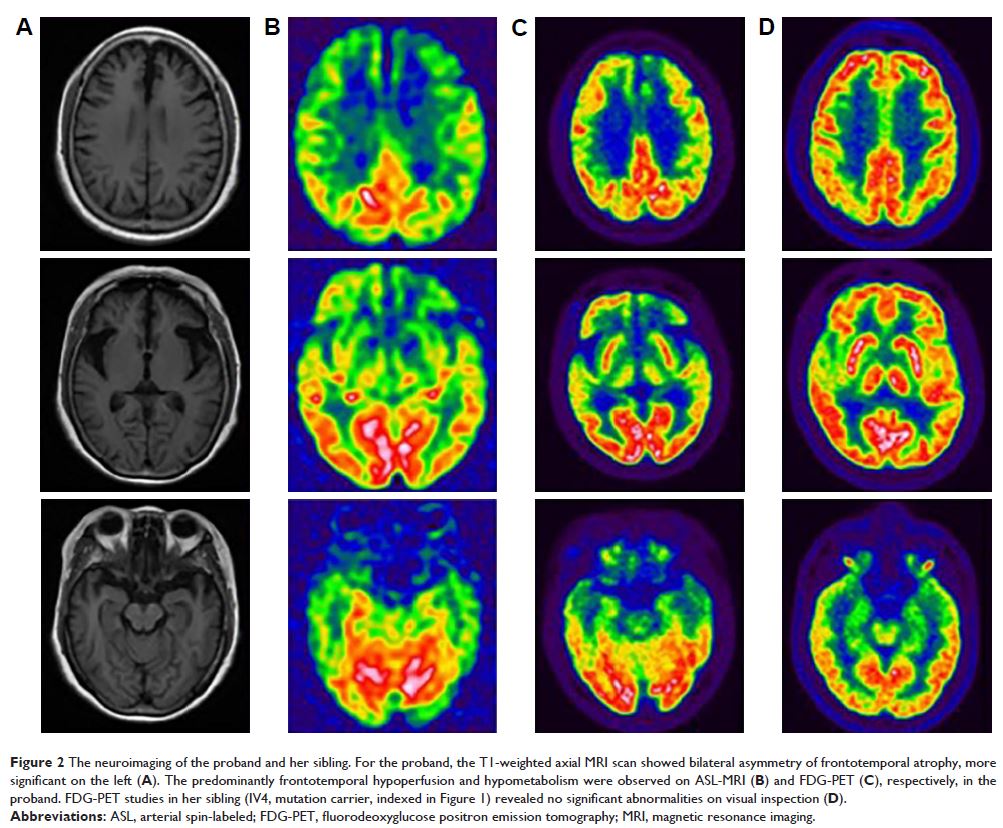108384
论文已发表
注册即可获取德孚的最新动态
IF 收录期刊
- 3.4 Breast Cancer (Dove Med Press)
- 3.2 Clin Epidemiol
- 2.6 Cancer Manag Res
- 2.9 Infect Drug Resist
- 3.7 Clin Interv Aging
- 5.1 Drug Des Dev Ther
- 3.1 Int J Chronic Obstr
- 6.6 Int J Nanomed
- 2.6 Int J Women's Health
- 2.9 Neuropsych Dis Treat
- 2.8 OncoTargets Ther
- 2.0 Patient Prefer Adher
- 2.2 Ther Clin Risk Manag
- 2.5 J Pain Res
- 3.0 Diabet Metab Synd Ob
- 3.2 Psychol Res Behav Ma
- 3.4 Nat Sci Sleep
- 1.8 Pharmgenomics Pers Med
- 2.0 Risk Manag Healthc Policy
- 4.1 J Inflamm Res
- 2.0 Int J Gen Med
- 3.4 J Hepatocell Carcinoma
- 3.0 J Asthma Allergy
- 2.2 Clin Cosmet Investig Dermatol
- 2.4 J Multidiscip Healthc

MAPT 基因在中国痴呆患者中的作用:P301L 谱系研究和简要文献综述
Authors He S, Chen S, Xia MR, Sun ZK, Huang Y, Zhang JW
Received 30 October 2017
Accepted for publication 26 March 2018
Published 18 June 2018 Volume 2018:14 Pages 1627—1633
DOI https://doi.org/10.2147/NDT.S155521
Checked for plagiarism Yes
Review by Single-blind
Peer reviewers approved by Prof. Dr. Roumen Kirov
Peer reviewer comments 3
Editor who approved publication: Professor Wai Kwong Tang
Background and
purpose: Frontotemporal dementia (FTD) is the
second most common presenile dementia characterized by behavioral changes and
language impairment. The diagnosis of FTD relies heavily on neuroimaging, and
sometimes on genetic screening. However, the genetic components in Chinese FTD
patients remain largely unknown. Only a few FTD cases with established
mutations have been reported in China. This study reported the detailed
clinical and neuroimaging features in a Chinese behavioral variant FTD family.
The role of MAPT gene mutation in Chinese
dementia patients was also reviewed.
Methods: By detailed inquiry of all affected individuals in the family,
this study summarized the main clinical features of the disease. Four candidate
genes (MAPT , PSEN1 , PSEN2 , and APP ) were screened by direct
sequencing. Structural magnetic resonance imaging (MRI), functional imaging of
cerebral blood flow with arterial spin-labeled MRI (ASL-MRI), and cerebral
metabolism with fluorodeoxyglucose positron emission tomography (FDG-PET) were
collected in the proband and healthy mutation carriers.
Results: By direct sequencing of candidate genes (MAPT , PSEN1 , PSEN2 , and APP ), this study identified the
P301L mutation in the MAPT gene in
the proband and three unaffected family members. The phenotype of the affected
cases was consistent within the pedigree. In this genetically proven behavioral
variant FTD (bvFTD) patient, the maps of hypoperfusion on ASL-MRI look fairly
similar to the hypometabolism on FDG-PET. The clinical feature for this bvFTD
was in line with the hypoperfusion or hypometabolism pattern on functional
neuroimagings. The phenotype of P301L in east Asia seems similar to western
countries.
Conclusion: For the inherited FTD patients, ASL-MRI and genetic identification
were strongly recommended for the final diagnosis. In case of being
underestimated, the role of MAPT gene
mutation in Chinese FTD patients warrants further investigation.
Keywords: frontotemporal dementia, MAPT , arterial spin
labeling MRI, FDG-PET
